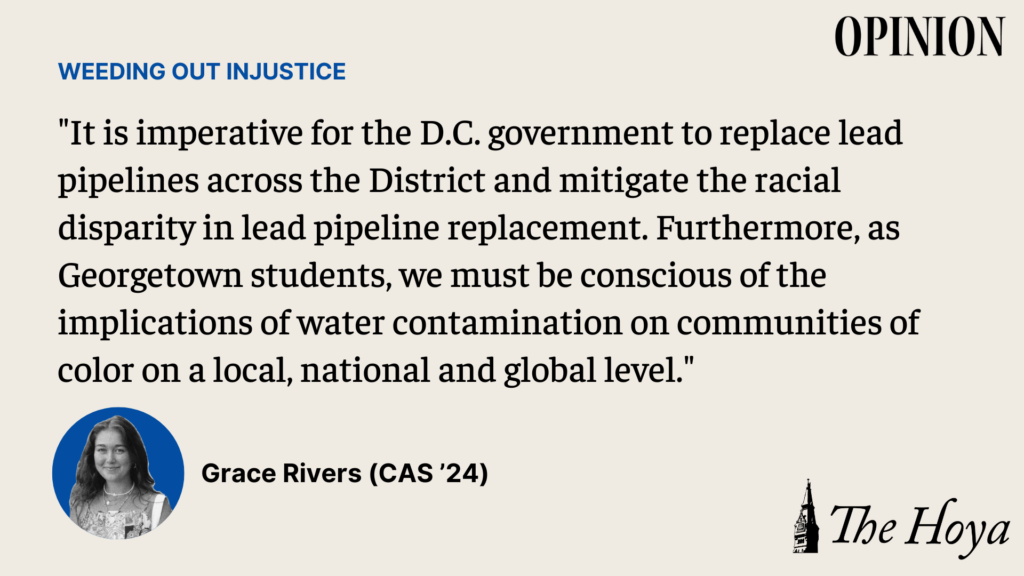Almost 10% of the world’s population suffers from water insecurity, meaning 785 million people lack access to clean, potable water. In the United States specifically, 40% of the population drinks water from contaminated water systems, and communities of color are particularly at risk of exposure.
A 2019 report from the Natural Resources Defense Council identified 406 counties in the United States with the highest racial, ethnic and language vulnerability, as well as the highest rate of health-related potable water violations. The report revealed that despite the 1974 Safe Drinking Water Act, which attempted to ensure equal access to potable water, contamination and health violations are still disproportionately pervasive for 406 communities in the United States.
In 2004, Washington, D.C., faced severe lead contamination in its water systems — and the vast majority of the pipes that caused this leach are still in the ground today. The District coordinated a series of programs to address the leach, some of which expected customers to finance the replacement of their lead pipes themselves. An American University report found that these programs disadvantaged low-income and African American households, leaving them at a greater risk of experiencing another lead leach.
It is imperative for the D.C. government to replace lead pipelines across the District and mitigate the racial disparity in lead pipeline replacement. Furthermore, as Georgetown students, we must be conscious of the implications of water contamination on communities of color on a local, national and global level.
Ever since its water crisis in 2004, the District has been struggling to eliminate lead from its drinking water. According to the current water plan, 39% of lead service line replacements still have to be initiated by the residents, making it clear that this is a matter of financial access. Despite setting a goal to replace all remaining lead-contaminated water service lines by 2030, D.C. residents’ participation in the District’s replacement program is currently voluntary, meaning that only primarily affluent families are able to invest thousands of dollars in new pipelines.
As such, Black and brown, low-income families are disproportionately vulnerable to and impacted by lead exposure, as they often reside in older housing without access to water filters.
Yet, this environmental inequity is not solely confined to the District — it is also prevalent on a national level. The Centers for Disease Control and Prevention released a report that quantified the lead levels in the blood of children who are 1 to 5 years old and found that Black children average over two times the levels of white children.
This significantly higher exposure among Black families and children can be traced back to redlining, when mortgage appraisers deliberately sectioned off the least desirable neighborhoods of a city, and lenders refused to approve mortgages for Black families outside these areas, leading to the rapid decline of these neighborhoods.
As Georgetown students, being conscious of the influence of institutionalized racism on our own city remains critical to its mitigation. Furthermore, lead exposure remains a possibility on our own campus, especially given our aging infrastructure. Therefore, it remains all the more critical that we are attentive to the historically inequitable effects of water pollution on communities of color and ensure our campus remains free of contamination.
As for the District, the Biden administration committed to remedying the problem through the Lead Pipe and Paint Action Plan, which is nested under its Bipartisan Infrastructure Law. Thanks to the bill, D.C. has received $140 million for its pipeline replacement project. Nevertheless, the most critical task for the District remains: allocating the funds in a way that addresses the lead exposure disparity among white and Black residents.
Only then can students ensure that we are attentive to the historically inequitable effects of water pollution on communities of color and ensure our campus remains free of contamination.
Grace Rivers is a junior in the College of Arts & Sciences. Weeding out Injustice is published every third Friday.














